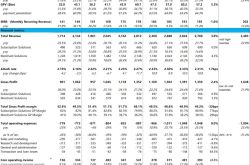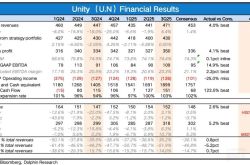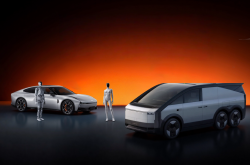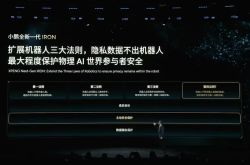Penetrating Intelligent Driving: The Transformational Impact of Mid-Level Solutions on the Auto Market
![]() 02/05 2025
02/05 2025
![]() 525
525
In 2025, the landscape of intelligent driving is undergoing a seismic shift, with automakers increasingly adopting a more streamlined approach to their intelligent driving solutions. BYD, with its clear strategy to equip models priced above 100,000 yuan with standard mid-level intelligent driving, has set the tone, causing ripples that are being felt across the industry. Dongfeng Lanvin, Chery, Great Wall, Geely, and numerous other automakers are swiftly following suit, intensifying their efforts to mass-produce intelligent driving systems on advanced computing platforms.
In the realm of intelligent driving, low-level solutions typically encompass features like adaptive cruise control and lane keeping, while high-level solutions boast capabilities such as urban NOA. Mid-level intelligent driving, nestled comfortably between these two extremes, encompasses solutions that enable parking assistance, highway NOA, and urban navigation.
Amidst the fiercely competitive auto market, while high-end technological prowess remains crucial for bolstering brand image, mid-level intelligent driving has quietly emerged as the linchpin for sustaining sales and market share. Especially within the mainstream price bracket of 100,000-200,000 yuan, mid-level solutions are gradually supplanting their low-level counterparts, fundamentally reshaping the market dynamics.
▍Mid-Level Intelligent Driving: The New Frontier
As a pioneer in the new energy vehicle sector, BYD continues to push the boundaries of intelligent driving. It has reportedly selected approximately 20 models across various platforms, including J6E, J6M, and OrinN, to fully integrate standard mid-level intelligent driving for vehicles priced above 100,000 yuan.
BYD's strategy revolves around a self-developed mid-level solution, complemented by collaborations with multiple suppliers like Horizon Robotics, Momenta, Joyway, and Huawei. This approach leverages the strengths of all parties to offer diverse mid-to-high-level intelligent driving options, ensuring swift volume delivery to meet market demands while maintaining a firm grip on core technologies and the product's "soul".
Dongfeng Lanvin, on the other hand, has deepened its strategic partnership with Huawei, introducing the Qiankun Intelligent Driving Edition on the new Dreamer model, which incorporates a mature high-level intelligent driving solution. Additionally, based on the Horizon Journey 6 solution, Lanvin is actively pursuing mid-level independent research and development. Future Lanvin models will progressively incorporate self-developed mid-level intelligent driving systems, offering consumers a more cost-effective and brand-specific intelligent driving experience.

Chery Automobile has made significant strides in collaboration with Horizon Robotics. The Horizon Journey 6 series has secured platform-based designated cooperation from the Chery Group and will be integrated into four major brand models under Chery, EXEED, JETOUR, and iCAR.
HAOMO.AI, an autonomous driving solution provider under Great Wall Motors, offers mid-level intelligent driving solutions that seamlessly integrate driving and parking functions for select Great Wall Motors models. Simultaneously, Great Wall Motors has introduced AutoX, whose high-level intelligent driving solution with map-free NOA is implemented on models like the new Blue Mountain. Furthermore, Great Wall Motors is actively testing solutions from multiple suppliers, including DJI.
Geely Automobile promotes mid-level intelligent driving through the Smart brand, a joint venture with Mercedes-Benz. The Smart #1 SUV debuted with a map-free urban NOA function solution provided by AutoX. Concurrently, Geely Automobile is also independently researching and developing technology for internal use.
In summary, despite each automaker's unique strategy, the common thread is the mass production and implementation of mid-level intelligent driving. Whether through independent research and development or collaboration with suppliers, automakers are striving to refine intelligent driving solutions that align with their brand identity while ensuring delivery capabilities to withstand the rigors of the market.
▍Market Demand Drives Intelligent Driving Adoption
The evolution of consumer demand for intelligent driving stands as a pivotal force driving the ascendancy of mid-level solutions.
As the younger generation ascends to prominence in car purchases, vehicles have transcended their role as mere transportation tools. Intelligent configurations have become a core consideration in purchasing decisions. Mid-level intelligent driving precisely addresses the needs of mass consumers due to its high cost-effectiveness. Unlike the complex and expensive technical configurations of high-level intelligent driving, mid-level solutions focus on everyday, high-frequency driving scenarios.
Market data unequivocally supports this trend. In recent years, sales of models equipped with mid-level intelligent driving functions have steadily climbed, particularly within the 100,000-200,000 yuan price range. The proportion of consumers opting for intelligent driving features has continued to surge. According to incomplete statistics, after popular models were outfitted with mid-level intelligent driving, market attention and sales increased by 20%-30% compared to previous models in the same price bracket without or with low-level intelligent driving. This underscores the strong allure of mid-level intelligent driving in the mainstream consumer market, prompting automakers to accelerate their layouts and seize market opportunities.
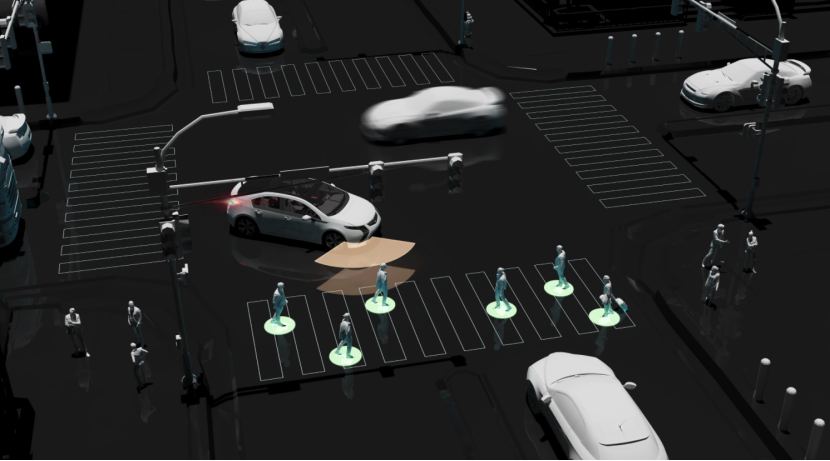
At the recent CES 2025, several automakers showcased innovative mid-level intelligent driving technologies. For instance, some companies introduced mid-level intelligent driving systems integrating multi-sensor technology. By optimizing the coordinated operation of cameras, millimeter-wave radars, and ultrasonic radars, these systems enhance perception capabilities in complex road conditions.
In simulated urban street test scenarios, the system can more accurately identify pedestrians, vehicles, and obstacles, respond proactively, and significantly boost driving safety. Other companies demonstrated mid-level intelligent driving assistance functions based on artificial intelligence algorithms, which can intelligently adjust driving modes according to driver habits and real-time road conditions, providing users with a more personalized driving experience. The unveiling of these new technologies garnered the attention of global industry experts and media, fueling consumer anticipation for the future of mid-level intelligent driving.
In the fiercely competitive auto market, mid-level intelligent driving has emerged as the core defense line for automakers to maintain sales and market share. Unlike high-level intelligent driving, which emphasizes technological prowess and high-end discourse power, mid-level solutions prioritize satisfying the daily travel needs of the vast majority of mainstream consumers. With their high cost-effectiveness and practicality, mid-level solutions have firmly established themselves in the crucial 100,000-200,000 yuan price range, creating a robust "moat" for automakers.
From a user experience perspective, low-level intelligent driving often falls short when dealing with complex road conditions. Market feedback data starkly illustrates the limitations of low-level solutions. In the mainstream family car market, the proportion of optional low-level intelligent driving models has continuously declined, with some brands experiencing a decrease of over 10% in this proportion over the past year. Consumer surveys reveal that over 60% of respondents complain that low-level intelligent driving is "neither here nor there," failing to meet expectations for intelligent travel, thereby causing relevant models to gradually lose their competitive edge and struggle with sluggish sales growth.
▍Balancing Cost and Safety
Cost control is paramount for automakers aiming to mass-produce mid-level intelligent driving solutions. Chips and sensors, as core hardware components, incur significant procurement costs: Currently, the NVIDIA Orin X chip costs over 3,000 yuan per piece, and configuring multiple chips to achieve high computing power substantially increases costs. The price of high-precision LiDAR, while slightly decreased with industry development, still hovers above 2,000 yuan, posing considerable cost pressures on automakers. The human, material, and financial resources expended on research and development, testing and validation, and other aspects are also substantial. From algorithm writing and software debugging to vehicle matching and testing, each stage requires massive financial support.
To mitigate costs and enhance efficiency, automakers enhance their bargaining power through large-scale procurement and sign long-term cooperation agreements with chip and sensor suppliers to secure favorable prices. Additionally, they continuously optimize supply chain management, introduce high-quality local suppliers, shorten supply cycles, and reduce logistics costs. For example, Chery has jointly developed custom chips with Horizon Robotics, precisely optimizing chip performance based on model requirements to avoid over-provisioning and cost wastage, ensuring controllable hardware costs while maintaining intelligent driving functionalities.

While pursuing cost optimization, data security has ascended to the forefront. Intelligent driving operations rely heavily on massive data collection, transmission, and processing, encompassing sensitive information such as vehicle location, driving trajectories, and driver habits. Any leakage could lead to severe security risks and privacy issues. In recent years, the country has successively enacted regulations like the "Provisions on the Administration of Automobile Data Security (Trial)" to clarify automakers' data security responsibilities and standardize data processing procedures.
2025 marks a pivotal juncture in the development of intelligent driving. The burgeoning rise of mid-level intelligent driving is comprehensively reshaping the auto industry ecosystem. With continuous technological advancements and effective cost control, mid-level intelligent driving will cease to be an exclusive feature of a few models but will instead be widely adopted in the mainstream consumer market, becoming a "standard configuration" for vehicles, allowing a broader spectrum of consumers to experience the convenience of intelligent travel.
At the market level, mid-level intelligent driving will deeply integrate into consumers' car purchasing decision-making processes. Consumers may no longer solely base their choices on traditional factors like price and appearance. The quality of the intelligent driving experience will emerge as a critical variable influencing purchase intentions. This underscores the need for automakers to increase investments in intelligent driving function promotion and user education, enhancing consumers' awareness and trust in intelligent driving technology, thereby leveraging intelligent driving advantages to drive the market and achieve a dual win in sales and reputation.


